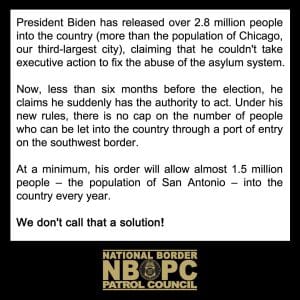http://www.fedsmith.com/2016/11/09/federal-government-and-federal-employees-under-president-trump/

President Trump?
Those two words becoming a reality were considered highly unlikely before yesterday’s election.
In a year of political surprises, America’s election of Donald Trump as president despite consistently running behind in many polls is a historic event. As happened in the United Kingdom earlier this year, voters made up their own minds and ignored the political class and views often expressed in the political press.
For the federal workforce, there is little doubt there will be changes on the horizon after January 2017. Without regard to the desirability of these changes, the long political campaign is an overview of the philosophy and programs to be pursued by President Trump.
Republican Control of Government
The degree to which the President of the United States’ political party has control over the House of Representatives and Senate often determines political strength. The ability to pass sponsored legislation, ratify treaties, and approval of Cabinet members and judges are all easier with one party controlling Congress and the White House. In 2017, Republicans control Congress with a very narrow margin in the Senate and a larger majority in the House.
Implications for Federal Employees
What are implications the implications of the election results for the federal workforce? While FedSmith has run articles on proposals and plans of each candidate, proposals and statements from the winning candidate take on new significance after the election results have been calculated.
Here are some of the more significant change possibilities for the federal workforce.
10,000 New Federal Employees
As a candidate, Trump outlined a plan to triple the number of Immigration and Customs Enforcement (ICE) officers currently on the federal payroll. The American immigration policies have been a focal point of the Trump campaign. As a result, the Trump campaign has provided significant details on his plans to change America’s immigration policy, particularly the massive uncontrolled immigration flow along our southern border with Mexico.
Hiring Freeze in the “Contract With America”
In his “Contract With America,” Donald Trump described the document as “a contract between myself and the American voter — and begins with restoring honesty and accountability, and bringing change to Washington.” The second item in the document (right after calling for term limits for all members of Congress) calls for a “hiring freeze” for much of the federal workforce.
The contract notes that in the first 100 days of his administration, there will be ‘a hiring freeze on all federal employees to reduce the federal workforce through attrition (exempting military, public safety, and public health).”
Rising Influence of the Border Patrol Union
The National Border Control Council was an early supporter of Donald Trump. The National Ice Council also supported Trump endorsing him in September 2016.
“I have been honored to receive the endorsement of America’s Border Patrol agents, and will work directly with them to protect the integrity of our lawful, lawful, immigration system… By ending catch-and-release on the border, we will stop the cycle of human smuggling and violence. Illegal border crossings will go down. We will stop it. It will not be happening very much anymore.”
The National Border Patrol Council was not half-hearted in its endorsement of Donald Trump. Here are comments from the union in their endorsement:
“We need a person in the White House who doesn’t fear the media, who doesn’t embrace political correctness, who doesn’t need the money, who is familiar with success, who won’t bow to foreign dictators, who is pro-military and values law enforcement, and who is angry for America and NOT subservient to the interests of other nations. Donald Trump is such a man.”
Here is what the Trump campaign said about the union: “…Border Patrol agents will have a ‘direct line’ to the White House if Donald Trump becomes President of the United States.”
Other federal employee unions endorsed Hillary Clinton for president early on in the political campaign. AFGE released its endorsement of Clinton in December 2015. NTEU followed up in January 2016 with its support of Clinton for president.
Reforming the Department of Veterans Affairs
The VA has found itself often cited in news headlines in recent years. That may not change under the Trump administration.
Reforming the agency has been a frequent item mentioned by Candidate Trump during the campaign. He has said his first initiative would be to name a new VA secretary with a “personal mission” to clean up the department. As part of this program, firing executives accused of wrongdoing would appear to be near the top of his list for the agency.
Changing rules for the VA could also have implications for the entire federal workforce. Bill Rausch, executive director of Got Your 6, a nonprofit veteran advocate group made several observations about Trump’s proposals to reform the VA.
“Firing people, Donald Trump is certainly good at that. But the bigger problem is it’s not about the VA, it’s about the federal employee process. If Donald Trump is going to address that, he is going to have to address that across the federal hiring system.”
There is also likely to be a push to create more options for veterans to use private sector health care.
“People are waiting in line five days, six days, and they are dying,” he said in Charlotte, N.C., on July 26. “If you are waiting in line, you’re going to go to a private doctor across the street, a private or public hospital across the street or nearby, and you’re going to be taken care of quickly and efficiently.”
Ramping up the Department of Defense
The Department of Defense would fare well under President Trump based on this comment in his acceptance speech: “We will completely rebuild our depleted military. And the countries that we protecting at a massive cost to us will be asked to pay their fair share.”
Here is a summary of Trump’s plan for DoD:
Work with Congress to fully repeal the defense sequester and submit a new budget to rebuild our depleted military.
Increase the size of the U.S. Army to 540,000 active duty soldiers, which the Army Chief of Staff says he needs to execute current missions.
Rebuild the U.S. Navy toward a goal of 350 ships, as the bipartisan National Defense Panel has recommended.
Provide the U.S. Air Force with the 1,200 fighter aircraft they need.
Grow the U.S. Marine Corps to 36 battalions.
Invest in a serious missile defense system to meet growing threats by modernizing our Navy’s cruisers and procuring additional, modern destroyers to counter the ballistic missile threat from Iran and North Korea.
Emphasize cyber warfare and require a comprehensive review from the Joint Chiefs of Staff and all relevant federal agencies to identify our cyber vulnerabilities and to protect all vital infrastructure and to create a state-of-the-art cyber defense and offense.
Pay for this necessary rebuilding of our national defense by conducting a full audit of the Pentagon, eliminating incorrect payments, reducing duplicative bureaucracy, collecting unpaid taxes, and ending unwanted and unauthorized federal programs.
Smaller Federal Government
The Trump plan for reducing the size of the government and its impact on American citizens can be seen in several different areas. Here is a summary taken from the Trump campaign website that gives an indication of his philosophy and approach:
Decrease the size of our already bloated government after a thorough agency review.
Ask all Department heads to submit a list of every wasteful and unnecessary regulation which kills jobs, and which does not improve public safety, and eliminate them.
Reform the entire regulatory code to ensure that we keep jobs and wealth in America.
End the radical regulations that force jobs out of our communities and inner cities. We will stop punishing Americans for working and doing business in the United States.
Issue a temporary moratorium on new agency regulations that are not compelled by Congress or public safety in order to give our American companies the certainty they need to reinvest in our community, get cash off of the sidelines, start hiring again, and expanding businesses. We will no longer regulate our companies and our jobs out of existence.
Cancel immediately all illegal and overreaching executive orders.
Federal Employee Unions in a Trump Administration
As a candidate, Donald Trump was often mentioned by federal employee unions, inevitably in a very negative way.
For example, here is an opinion delivered by AFGE’s National President David Cox:
“Donald Trump embarrasses some of even the most right wing Republicans … precisely because he IS the modern-day GOP stripped of its dog whistles and taken to its logical extreme … but if we take his defeat for granted, we’ll have a rude awakening in November.”
As a candidate, Donald Trump has not said much of anything about federal employee unions. His personal philosophy regarding federal employee unions is largely unknown.
Obviously, the larger unions have been vocal in their support of Hillary Clinton. While the federal workforce is designed to be politically neutral, the role of unions has been increasing since the Kennedy administration.
Federal unions generally are overwhelming in their support of Democrats. There are exceptions, as noted above with unions representing the Border Patrol and Immigration and Customs employees in this most recent election. With federal unions often seen as a political arm of the Democrats, federal employees may be more subject to changes in working conditions and protections than they would be if seen as a helpful component implementing policies of a new administration.
One of the advisors to the Trump campaign is Newt Gingrich. The former Speaker of the House does have strong views about federal employees and unions. Here are his comments from a recent interview:
“Getting permission to fire corrupt, incompetent, and dishonest workers—that’s the absolute showdown,” Gingrich said. He assumes that federal employees’ unions would resist, thus producing, in his words, an “ongoing war” similar to the conflict that engulfed Madison, Wisconsin, in 2011, when Governor Scott Walker moved to limit public-sector employees’ collective-bargaining rights. After five months of protests, and a failed effort to recall the Governor and members of the state senate, Walker largely prevailed. Gingrich predicts that that chaotic dynamic can be brought to Washington. “You have to end the civil-service permanent employment,” he said. “You start changing that and the public-employee unions will just come unglued.”
With Congress and the White House under Republican control, it is also possible that some legislative proposals will have a greater chance of passage. Of course, the Senate is almost easily exactly divided between the two parties which will still make passing new laws or repealing old ones a difficult task.
Making it easier to fire federal federal employees, modifying or removing the “official time” provision from the federal labor relations statute, changing the length of the probationary term for new federal employees, and modifying federal benefits could come under more serious consideration with the new political line-up. (See Worst Case Scenario: Proposed Cuts to Federal Pay and Benefits)
What Happens Next?
Life as a federal employee will be interesting in the coming months. The reality will likely be much better than the worst fears of some in the federal community. A President Trump is largely an unknown quantity on many issues that will impact the federal workforce. Until he takes office and starts making decisions, many assumptions of changes that will occur are often little more than guesswork.
– See more at: http://www.fedsmith.com/2016/11/09/federal-government-and-federal-employees-under-president-trump/#sthash.myxRl50Y.dpuf


